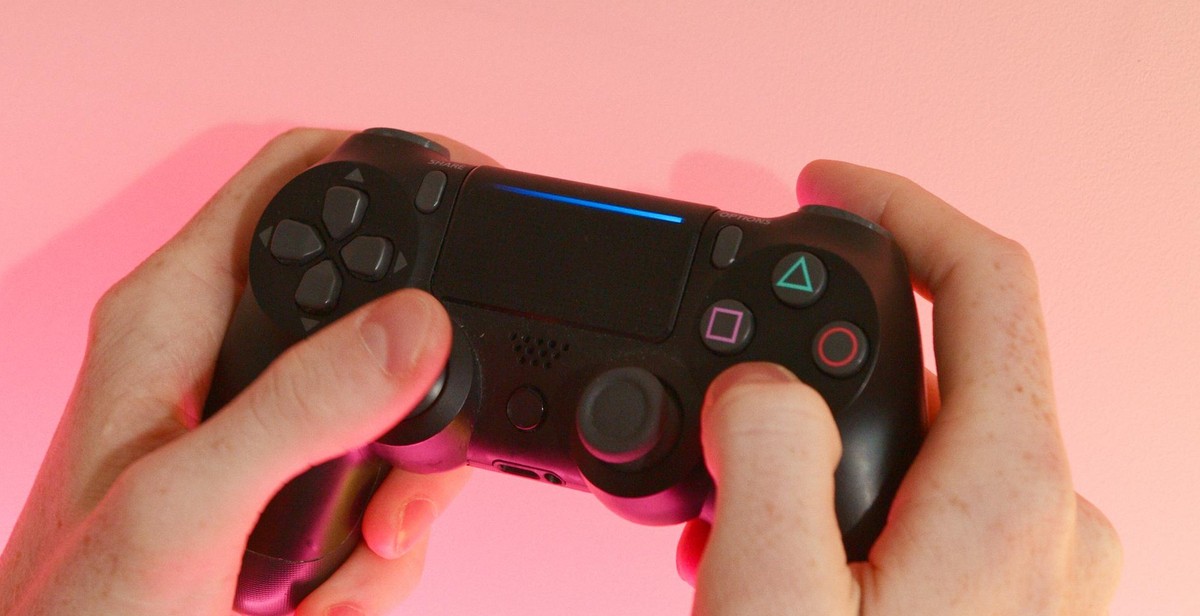How to Optimize Gameplay Settings for Competitive E-sports
E-sports has taken the world by storm, and it is now a multi-billion dollar industry. Competitive gaming requires a lot of skill, practice, and dedication. However, it’s not just about the player’s skills; the game settings also play a significant role in determining the outcome of a match. In this article, we will discuss how to optimize gameplay settings for competitive e-sports.
The Importance of Optimizing Gameplay Settings
Every e-sport has its own unique gameplay settings that affect the outcome of a match. These settings include graphics, sound, controls, and network settings. Optimizing these settings can give players an edge over their opponents. For example, adjusting graphics settings can improve the player’s visibility and reduce distractions, while optimizing network settings can reduce lag and improve the player’s reaction time.
Graphics Settings
Graphics settings play a crucial role in competitive gaming. Players need to adjust their graphics settings to maximize visibility and minimize distractions. Some of the essential graphics settings to consider include resolution, field of view, and brightness.
Sound Settings
Sound can also affect a player’s performance in e-sports. Players need to optimize their sound settings to hear crucial in-game sounds, such as footsteps, gunshots, and ability cues. Adjusting sound settings can also help players locate enemies and react to in-game events quickly.
Control Settings
Control settings are essential in e-sports as they affect a player’s ability to execute actions in the game. Players need to optimize their control settings to ensure that they can execute actions quickly and accurately. Some of the essential control settings to consider include mouse sensitivity, keybindings, and controller settings.
Network Settings
Network settings can significantly impact a player’s performance in e-sports. Players need to optimize their network settings to reduce lag and improve their reaction time. Some of the essential network settings to consider include network quality, ping, and packet loss.

Understanding Gameplay Settings
Gameplay settings refer to the various options that are available in a video game that can be tweaked to change the way the game is played. These settings can range from simple things like adjusting the volume of the game’s sound effects to more complex options like changing the way the game’s physics engine handles movement and collision detection.
Gameplay settings are important because they can significantly affect a player’s performance in the game. By tweaking these settings, players can optimize their gameplay experience to suit their individual preferences and play style. This is especially important in competitive e-sports, where even small differences in performance can mean the difference between winning and losing.
What are Gameplay Settings?
Gameplay settings can vary widely depending on the game in question, but they generally fall into a few broad categories:
- Graphics settings: These settings control the quality and performance of the game’s graphics. Options may include things like resolution, texture quality, and anti-aliasing.
- Audio settings: These settings control the game’s sound effects and music. Options may include volume levels for different types of audio, as well as the ability to enable or disable specific audio features.
- Control settings: These settings control the way the game is played. Options may include things like mouse sensitivity, button mappings, and aim assist.
- Gameplay settings: These settings control various aspects of the game’s mechanics. Options may include things like movement speed, weapon balance, and respawn timers.
Why are Gameplay Settings Important?
Gameplay settings are important because they can significantly affect a player’s performance in the game. By tweaking these settings, players can optimize their gameplay experience to suit their individual preferences and play style.
For example, a player who prefers to play aggressively may want to increase their mouse sensitivity and decrease their weapon recoil, while a player who prefers a more defensive play style may want to do the opposite. Similarly, a player who is struggling to hit their targets may want to enable aim assist, while a player who is already skilled at aiming may want to disable it for a greater challenge.
In competitive e-sports, where even small differences in performance can mean the difference between winning and losing, gameplay settings can be especially important. By optimizing their settings for maximum performance, players can gain an edge over their opponents and increase their chances of success.

Optimizing Gameplay Settings for Competitive E-sports
Competitive E-sports require players to have the best possible gaming experience to perform at their best. Optimizing gameplay settings is crucial to achieving this. Here are some settings to consider:
Frame Rate and Resolution
Frame rate and resolution are essential to optimizing gameplay settings. Higher frame rates and resolutions provide smoother gameplay, making it easier to react to the game’s events. However, it is important to balance performance and graphics quality. Lowering the graphics quality can increase frame rates, but reducing it too much can affect gameplay negatively.
Mouse Sensitivity and DPI
Mouse sensitivity and DPI are critical settings for competitive E-sports. The right combination of sensitivity and DPI can improve accuracy and reaction times. Players need to experiment to find the right balance that works for them. A general rule of thumb is to have a low sensitivity and high DPI. This combination provides better accuracy and smoother movements.
Keybindings and Hotkeys
Keybindings and hotkeys are essential to optimizing gameplay settings. Players need to customize their keybindings to fit their playstyle. Players should also consider using hotkeys to make quick movements and actions. This can help players react faster and gain an advantage in the game.
Display Settings
Display settings are also crucial to optimizing gameplay settings. Players need to adjust their display settings to eliminate any distractions and provide a clear view of the game. This includes adjusting brightness, contrast, and color settings. Players should also consider using a gaming monitor with a high refresh rate and low input lag.
Audio Settings
Audio settings are often overlooked when optimizing gameplay settings. However, the right audio settings can help players react faster to in-game events. Players should consider using headphones to provide better sound quality and surround sound. Players should also adjust the volume settings to eliminate any distractions and provide clear audio cues.
Conclusion
Optimizing gameplay settings is essential to achieving success in competitive E-sports. Players need to experiment with different settings to find what works best for them. The settings mentioned above are a great place to start optimizing gameplay settings.

Testing and Tweaking Your Settings
Once you have adjusted your gameplay settings based on your hardware and preferences, it’s time to test and tweak them to ensure optimal performance and competitiveness. Here are some tips for testing and tweaking your settings:
Testing Your Settings
Testing your settings is crucial to ensure that they are working as intended and providing the best possible performance. Here are some ways to test your settings:
- Play a few rounds of your favorite game and pay attention to your FPS (frames per second) and ping (latency). If your FPS is consistently low or your ping is high, it may be an indication that your settings need further adjustment.
- Use benchmarking software like 3DMark or Heaven Benchmark to measure your system’s performance and compare it to other similar systems.
- Join online communities or forums dedicated to e-sports and ask for feedback on your settings. Other players may have valuable insights or tips that can help you improve your performance.
Tweaking Your Settings
Once you have identified areas that need improvement, it’s time to tweak your settings to optimize your gameplay. Here are some tips for tweaking your settings:
- Adjust your graphics settings to find the perfect balance between visual quality and performance. You may need to decrease certain settings like shadows or reflections to improve your FPS.
- Experiment with different mouse and keyboard settings to find the ones that suit you best. For example, you may prefer a higher mouse sensitivity or a different keybind for certain actions.
- Try out different network settings like TCP/IP tweaks or QoS (Quality of Service) settings to improve your ping and reduce latency.
- Update your drivers and firmware to ensure that your hardware is running optimally.
| Setting | Recommended Value | Reasoning |
|---|---|---|
| Resolution | 1920×1080 | This is the standard resolution for most monitors and provides a good balance between visual quality and performance. |
| Graphics Quality | Low/Medium | Lower graphics settings can significantly improve FPS without sacrificing too much visual quality. |
| Mouse Sensitivity | 3-5 | This is a good starting point, but you may need to adjust it based on your personal preferences and playstyle. |
| Keybinds | Customized | Customizing your keybinds can help you perform actions more quickly and efficiently. |
Remember, optimizing your gameplay settings is an ongoing process. You may need to test and tweak your settings regularly to ensure that you are getting the best possible performance and staying competitive in e-sports.

Conclusion
Optimizing gameplay settings is a crucial step for any gamer looking to compete at the highest level. By adjusting your graphics, sound, and control settings, you can gain a significant advantage over your opponents.
When it comes to graphics settings, it’s important to find a balance between visual quality and performance. Lowering graphics settings can improve your frame rate and reduce input lag, but at the expense of visual fidelity. Experiment with different settings to find what works best for you.
Sound settings can also be optimized to improve your gameplay. Adjusting the volume and spatial audio settings can help you hear important in-game sounds more clearly, giving you an advantage over players who aren’t paying as much attention to their audio settings.
Lastly, control settings are crucial for any competitive gamer. Finding the right sensitivity, button mapping, and deadzone settings can greatly improve your accuracy and reaction time. Take the time to experiment with different settings until you find what works best for you.
In conclusion, optimizing your gameplay settings is a necessary step for any competitive gamer. By finding the right balance between graphics, sound, and control settings, you can gain a significant advantage over your opponents and improve your chances of success in the world of e-sports.
